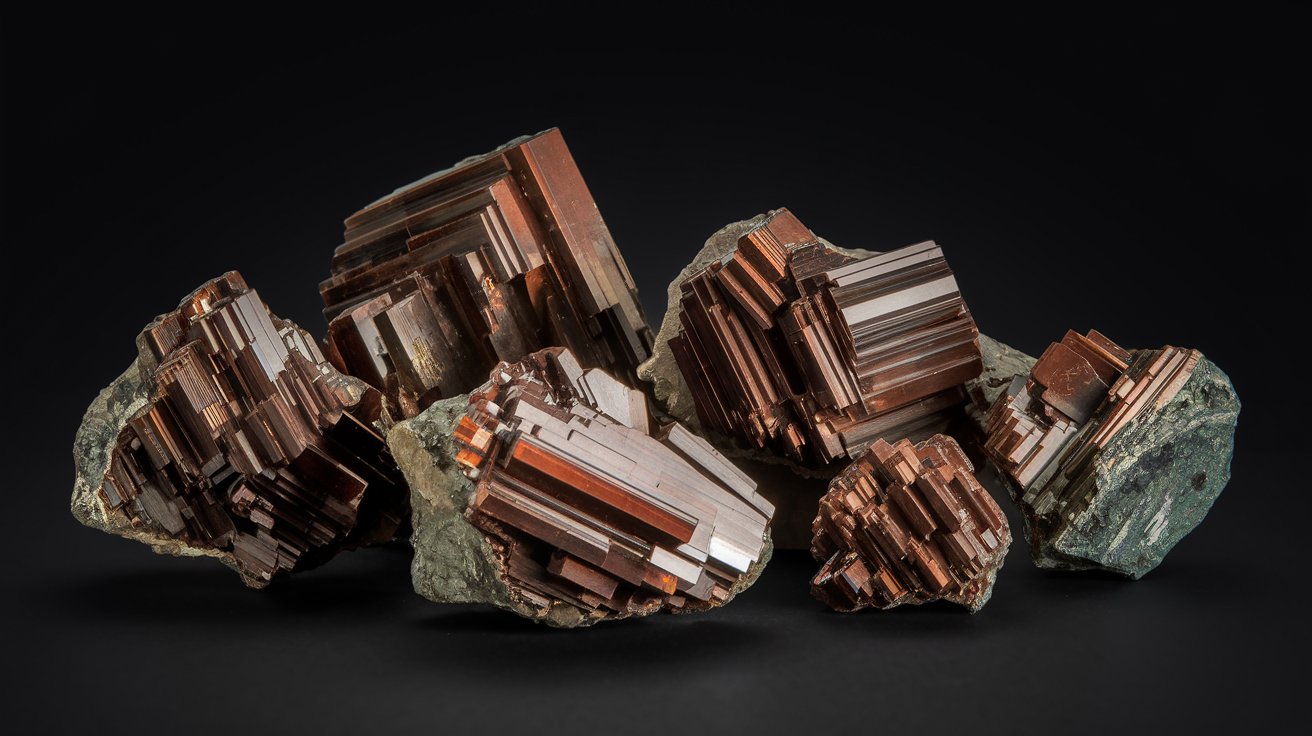
Zaccagnaite is a fascinating mineral that has captured the interest of geologists and mineral enthusiasts alike. But what makes this mineral so special? Zaccagnaite is a rare, naturally occurring mineral composed of zinc, aluminum, and carbonate. It was first discovered in the Italian Alps and named after the Italian geologist Domenico Zaccagna. This mineral is known for its unique crystal structure and striking appearance, often forming in hexagonal plates. Zaccagnaite is not just a pretty face; it also has significant scientific value. Researchers study it to understand more about mineral formation and the geological processes that create such rare specimens. Whether you're a budding geologist or just curious about the natural world, learning about Zaccagnaite offers a glimpse into the Earth's hidden treasures.
Key Takeaways:
- Zaccagnaite is a rare mineral with a fascinating history, named after Italian geologist Domenico Zaccagna. It has unique properties and can be found in specific locations around the world.
- Zaccagnaite has potential uses in scientific research and environmental remediation due to its layered structure and ability to absorb heavy metals. It can also fluoresce under UV light and is a prized specimen for mineral collectors.
What is Zaccagnaite?
Zaccagnaite is a rare mineral that has intrigued geologists and mineralogists for years. Named after the Italian geologist Domenico Zaccagna, this mineral has unique properties and a fascinating history. Let's dive into some interesting facts about Zaccagnaite.
-
Zaccagnaite was first discovered in 1968 in the Apuan Alps of Italy. This region is known for its rich geological diversity.
-
The mineral is named after Domenico Zaccagna, an Italian geologist who made significant contributions to the study of the Apuan Alps.
-
Zaccagnaite belongs to the hydrotalcite group of minerals. These minerals are known for their layered structure and are often referred to as "layered double hydroxides."
-
Its chemical formula is Zn4Al2(OH)12CO3·3H2O. This means it contains zinc, aluminum, hydroxide, carbonate, and water molecules.
-
The mineral typically forms in hydrothermal environments, where hot, mineral-rich water interacts with rocks.
Physical Properties of Zaccagnaite
Understanding the physical properties of Zaccagnaite can help in identifying and studying this mineral. Here are some key characteristics.
-
Zaccagnaite usually appears as white or colorless crystals. Its transparency can range from transparent to translucent.
-
The mineral has a hexagonal crystal system, which means its crystals are shaped like hexagons.
-
It has a Mohs hardness of 2 to 2.5, making it a relatively soft mineral. This softness means it can be easily scratched by harder substances.
-
Zaccagnaite has a specific gravity of about 2.1 to 2.2. This is a measure of its density compared to water.
-
The mineral exhibits perfect cleavage in one direction. Cleavage refers to the way a mineral breaks along specific planes.
Occurrence and Locations
Zaccagnaite is not a common mineral, but it can be found in specific locations around the world. Here are some notable occurrences.
-
Besides the Apuan Alps in Italy, Zaccagnaite has been found in Greece. The Lavrion District is known for its rich mineral deposits.
-
In the United States, Zaccagnaite has been discovered in Nevada. The mineral is often associated with zinc-rich deposits.
-
Zaccagnaite has also been reported in Japan, specifically in the Fukuoka Prefecture.
-
The mineral can form as a secondary mineral in oxidized zinc deposits. This means it forms after the primary minerals have already crystallized.
-
It is often found in association with other minerals, such as smithsonite, hemimorphite, and hydrozincite.
Uses and Applications
While Zaccagnaite is not widely used in commercial applications, it has some interesting uses in scientific research and collections.
-
Zaccagnaite is primarily of interest to mineral collectors. Its rarity and unique properties make it a prized specimen.
-
The mineral is studied for its layered structure, which has potential applications in materials science.
-
Researchers are exploring the use of Zaccagnaite in environmental remediation. Its ability to absorb heavy metals could help clean up contaminated sites.
-
Zaccagnaite's structure is similar to that of certain synthetic materials. This makes it a model for studying these materials.
-
The mineral's unique properties make it a subject of ongoing research. Scientists are continually discovering new aspects of its behavior and potential uses.
Fun Facts about Zaccagnaite
Let's wrap up with some fun and lesser-known facts about this fascinating mineral.
-
Zaccagnaite can fluoresce under UV light. This means it can glow when exposed to ultraviolet radiation.
-
The mineral's name is sometimes misspelled as "Zaccagnite". This common mistake can lead to confusion in the literature.
-
Zaccagnaite is not radioactive, making it safe to handle and study.
-
The mineral can form pseudomorphs, where it takes on the shape of another mineral while retaining its own composition.
-
Zaccagnaite has been featured in several mineralogical journals. These publications highlight its unique properties and occurrences.
-
The mineral's discovery in the Apuan Alps was a significant event. It added to the region's reputation as a hotspot for rare minerals.
-
Zaccagnaite can be synthesized in the lab. This allows scientists to study its properties without relying solely on natural specimens.
-
The mineral's layered structure is similar to that of clays. This makes it of interest to geologists studying sedimentary processes.
-
Zaccagnaite is sometimes used in educational settings. Its unique properties make it a great teaching tool for geology students.
-
The mineral's rarity makes it a valuable addition to any mineral collection. Collectors prize it for its beauty and scientific significance.
The Final Word on Zaccagnaite
Zaccagnaite, a rare mineral, holds a unique place in the world of geology. Found primarily in Italy, this mineral's layered structure and distinct chemical composition make it a subject of fascination. Its discovery dates back to the early 20th century, and since then, it has intrigued scientists and collectors alike.
Understanding Zaccagnaite's properties helps us appreciate the complexity of Earth's geological processes. Its formation involves specific conditions, making it a valuable indicator of environmental changes over time. This mineral's rarity and distinctive features ensure its continued importance in scientific research.
Whether you're a geology enthusiast or just curious about the natural world, Zaccagnaite offers a glimpse into the intricate workings of our planet. Keep exploring and learning about such fascinating minerals to deepen your appreciation for the Earth's hidden treasures.
Frequently Asked Questions
Was this page helpful?
Our commitment to delivering trustworthy and engaging content is at the heart of what we do. Each fact on our site is contributed by real users like you, bringing a wealth of diverse insights and information. To ensure the highest standards of accuracy and reliability, our dedicated editors meticulously review each submission. This process guarantees that the facts we share are not only fascinating but also credible. Trust in our commitment to quality and authenticity as you explore and learn with us.


